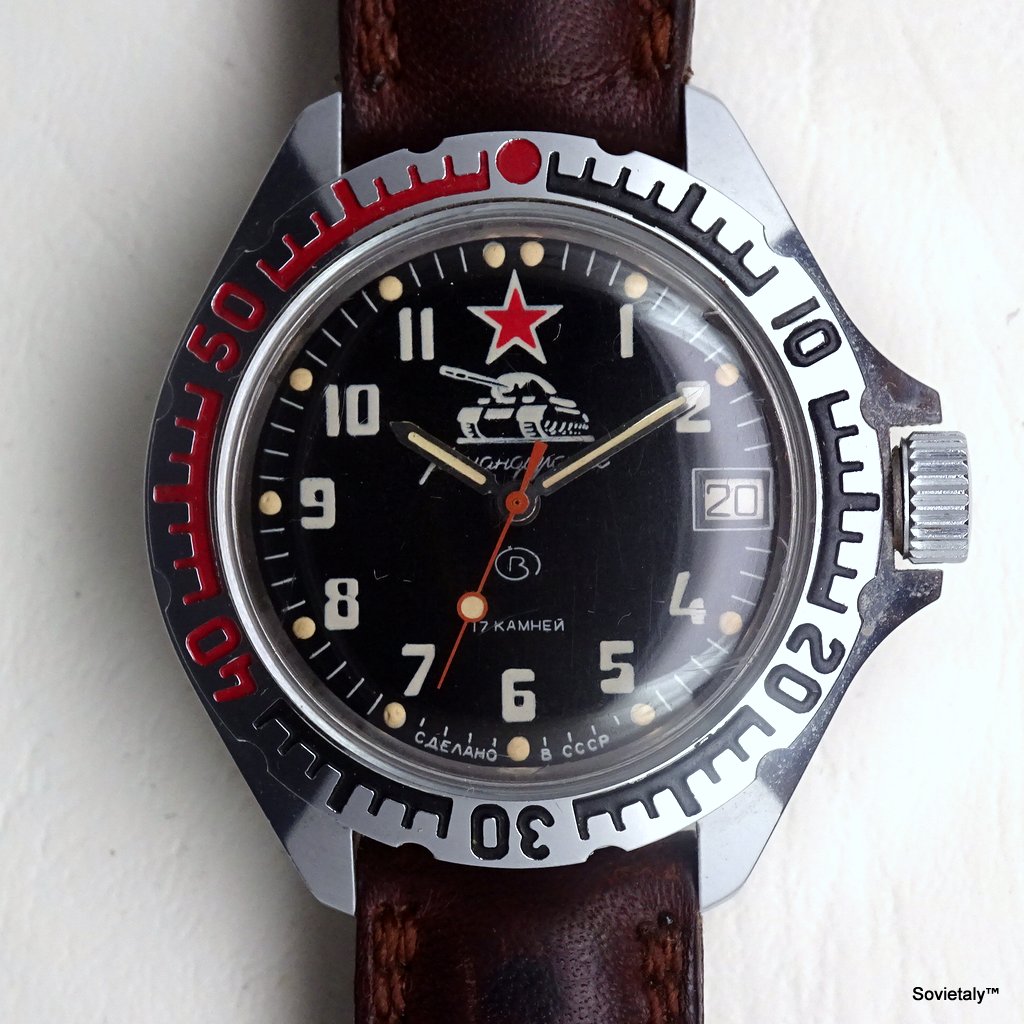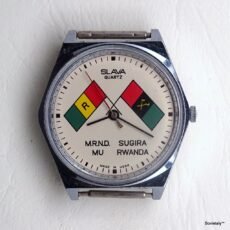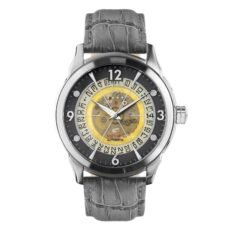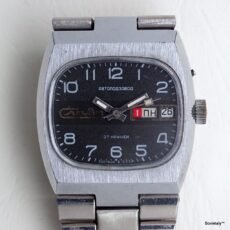Among the many military-themed Soviet watches, few are as striking as the 1980s Vostok Komandirskie featuring a tank and red star on its dial. But what exactly is that tank? Is it meant to represent a specific historical vehicle, like the T-34, or is it a symbolic image created to evoke Soviet victory and strength?
Let’s examine the silhouette, turret, gun, hull, and tracks in detail, comparing them with real Soviet tanks from World War II — including the T-34, KV-1, KV-2, IS-1 and IS-2 — to determine whether this is a faithful depiction or a stylised tribute.

General Shape and Proportions: A Medium Tank Profile
The tank shown on the dial has balanced proportions, with a low hull and relatively compact turret. The gun is long and extends well beyond the body — a configuration closely resembling the iconic T-34, the most celebrated Soviet medium tank of the Second World War.
In contrast, heavy tanks like the KV-1 or IS-2 featured bulkier silhouettes, taller and wider hulls, and significantly larger turrets. The depicted tank lacks these heavy features, pointing more convincingly to a medium tank design, possibly a simplified T-34/85.
Turret and Gun: Rounded and Clean
The turret is rounded, almost dome-like, consistent with Soviet cast turret designs introduced from 1942 onwards. It fits the profile of the T-34/85, which had a larger three-man turret with smooth, rounded sides. It may also vaguely resemble later KV-1 models or early IS tanks, but crucially, it doesn’t match the boxy and oversized KV-2 turret.
The gun appears long and straight, with no muzzle brake — a key point. Heavy tanks like the IS-2 typically had visible muzzle brakes on their 122mm guns. The lack of such detail aligns better with the 76mm or 85mm cannons found on the T-34 and KV-1.
Some observers have speculated that a slight bulge mid-barrel may represent a fume extractor, a feature found on postwar tanks like the T-62. If so, it’s likely an artistic liberty, not a historical representation.
Hull and Tracks: Compatible with the T-34
The hull appears flat and low, with simple lines. No hatches or ports are visible — typical of a stylised rendering. The tank’s length and the visible portion of its tracks suggest a five-wheel layout, matching the T-34’s Christie suspension system. By contrast, tanks like the KV-1, IS-2 and KV-2 had six large road wheels per side and longer track profiles.
Although the details are minimal, the design doesn’t contradict T-34 dimensions and supports the idea of a medium tank reference rather than a heavy behemoth.
Stylisation and Soviet Iconography
This is clearly a highly stylised graphic. As a dial decoration, it avoids technical complexity in favour of recognisability. Many finer details — hatches, viewports, co-axial machine guns, muzzle brakes — are absent.
Instead, the watch designers distilled the image into a universal symbol of Soviet strength. In 1980s USSR, the T-34 was already an icon of victory, and it’s no coincidence that many sellers and collectors refer to this dial as a “T-34 variant.”
Conclusion: More Symbol than Specimen
While the tank illustration is not a perfect match to any one real-life model, it shares most of its core traits with the T-34/85: a compact turret, long gun without muzzle brake, and a low, well-proportioned hull.
There are no compelling visual cues pointing toward the KV or IS series. The image is best understood as a symbolic homage to the T-34, fusing familiar visual cues into a bold, clean, instantly recognisable Soviet motif — one that continues to capture collectors’ imagination decades later.



